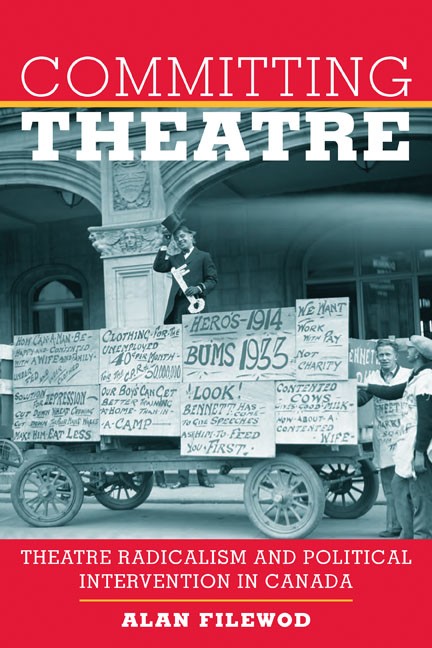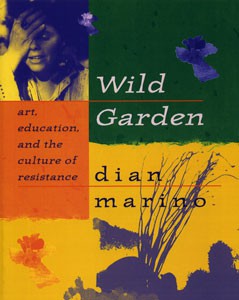
Committing Theatre
Theatre Radicalism and Political Intervention in Canada
- Ann Saddlemyer Award, Canadian Association for Theatre Research, 2012 (Winner)
- Gabrielle Roy Prize, Association for Canadian and Quebec Literatures, 2011 (Short-listed)
Committing Theatre offers the first full-length historical study of political intervention theatre and theatrical spectatorship in English Canada. Building on twenty years of research and engagement in the field, this book’s historical narrative frames close-up examples of how theatre artists have intervened in and engaged with political struggle from the mid-19th century to the present. Lumber-camp mock trials, Mayday parades and street protests, the Workers Theatre Movement, agitprop theatre, the counter-culture theatre of the 1960s and 1970s, and more recent anarchist theatre collectives all played a role in a vibrant and unique radical theatre culture that went largely unnoticed, unrecorded, and undocumented by the professional theatre establishment.
Praise
In Filewod’s hands, Canadian theatre history becomes a metaphor for the development of the modern Canadian nation-state and a transnational culture pressing ever more insistently against our borders.
– Quill & Quire
[Committing Theatre] is an absolutely essential book in its field–fuelled by a passion for theatre that makes a difference–and will permanently change the way in which theatre in Canada is understood.
– Literary Review of Canada
Committing Theatre challenges traditional paradigms and should be required reading in any study of Canadian theatre.
– Jerry Wasserman, professor of English and Theatre, University of British Columbia
Committing Theatre is a masterwork, an adroit synthesis of three decades of research, teaching, editing, organizational leadership and artistic practice. It is the most comprehensive survey of political theatre in the Canadian multiculture to date, but also a rigorous critique of the very terms “political” and “theatre” and their role in scholarship, the Canadian arts economy, and Canadian culture more generally.
– Theatre Research in Canada
Filewod’s lucid, brisk writing style makes this book a compelling read, validating and instigating much needed theatrical political intervention.
– Aida Jordão, popular theatre artist and scholar
Filewod’s lucid, brisk writing style makes this book a compelling read, validating and instigating much needed theatrical political intervention.
– Aida Jordão, popular theatre artist and scholar
Reading this is like watching a clockmaker dismantle the mechanism of Canadian theatre to show what makes it tick…Committing Theatre is a refreshingly clear-eyed work that moves the fence posts in the field of Canadian theatre analysis, and widens our field of vision.
– Chris Brookes, documentary-maker, former artistic director of the Mummers Troupe Theatre of Newfoundland, and Order of Canada recipient
In Filewod’s hands, Canadian theatre history becomes a metaphor for the development of the modern Canadian nation-state and a transnational culture pressing ever more insistently against our borders.
– Quill & Quire
This sophisticated yet accessible treatment combines personal reflection with scholarly rigour, and covers an impressive array of performance events, styles and venues.
– Stephen Johnson, director, Graduate Centre for Study of Drama, University of Toronto
Contents
| Preface | |
| Acknowledgements | |
| Chapter 1 | Purposeful Performance and Theatrical Refusals |
| Chapter 2 | Class, Spectatorship, and the Unruly: The Nineteenth Century |
| Chapter 3 | Mobilized Theatre and the Invention of Agitprop |
| Chapter 4 | Six Comrades and a Suitcase: From Agitprop to "Eight Men Speak" |
| Chapter 5 | Crafting Theatre Work: Mid-Century Radicalism |
| Chapter 6 | Generation Agitprop, with Puppets |
| Chapter 7 | A Case of Cultural Sabotage: The Mummers Troupe |
| Chapter 8 | Powering Structures and Popular Theatre |
| Chapter 9 | Out There: Digital Spaces, Chaos Aesthetics, Heritage Guerillas |
| Chapter 10 | Out There, In Here |
| Notes | |
| Bibliography | |
| Index |



